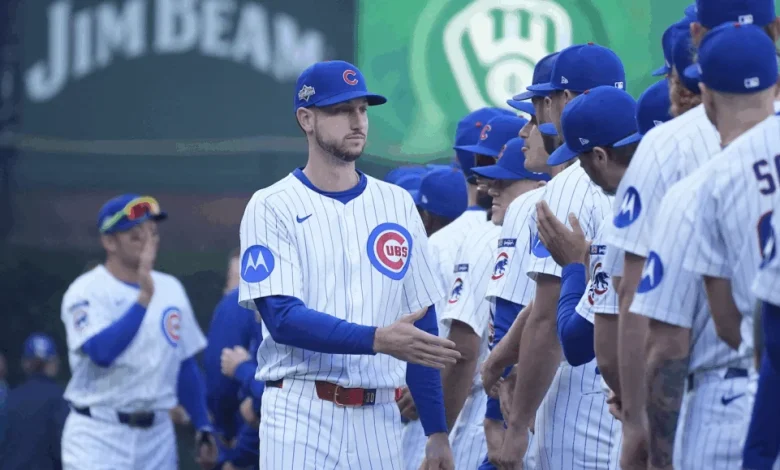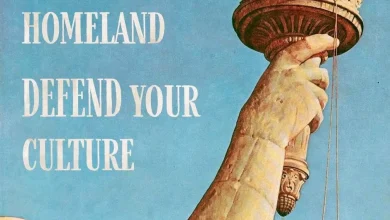Five MLB offseason questions that Cubs must successfully answer | Cubs News

The 2025 World Series is only a few days away from ending, which means hot stove season is right around the corner.
The MLB offseason kicks off immediately following the final World Series game, with option decisions looming in the first five days after either the Toronto Blue Jays or Los Angeles Dodgers hoist the trophy in celebration.
The Chicago Cubs had a strong year, winning 92 games and a playoff series.
[Was the 2025 season a success for Cubs?]
That came on the heels of a strong — and busy — offseason last winter when they traded for star outfielder Kyle Tucker, signed starter Matthew Boyd and made a plethora of other moves.
What will this offseason have in store for Jed Hoyer’s front office?
That remains to be seen, but here are the top five Cubs questions we have heading into the offseason:
1. What happens with Kyle Tucker?
This is a clear No. 1 — head and shoulders above any other question on this list.
The fate of Tucker will be a major storyline surrounding the Cubs — and all of MLB — this winter.
He is seen around the game as the top free agent available on the open market as a 28-year-old outfielder who has earned four straight All-Star nods and has the ceiling of an MVP-caliber player.
The Cubs traded for Tucker knowing he had only one year left of club control before hitting free agency. He put up a strong season (4.5 WAR, .841 OPS) but it was a tale of two halves.
The first half had him in the conversation for NL MVP alongside teammate Pete Crow-Armstrong and Dodgers superstar Shohei Ohtani. But a rough second half marred by injuries and the longest slump of his career put a damper on his overall line.
It’s the second straight season in which Tucker has been limited by injury. He missed more than half the year in 2024 due to a leg injury while with the Houston Astros.
This year, he dealt with a broken hand in the middle of the summer that may have led to some bad habits. He was actually benched in mid-August for a few days before coming back strong.
Unfortunately, that lasted only a week as a calf injury limited Tucker to just five games and 20 plate appearances in September. He returned to the lineup just in time for the playoffs, but was unable to play the field and could only DH.
Will the recent struggles and injury history impact the contract he gets in free agency? Either way, Tucker could command more than $400 million — and possibly significantly more than that.
Will the Cubs spend that much? The $184 million deal for Jason Heyward remains the largest contract in franchise history.
The Cubs will give Tucker a qualifying offer, so they will receive draft pick compensation if he signs elsewhere.
That will at least be some value, but if Tucker leaves, the Cubs would have to replace his production in the lineup.
When he was at his best in the first half of the season, the Cubs had arguably the best offense in baseball. When he struggled in the second half, they saw a noticeable dip in production.
2. What will they do with the Shota Imanaga option?
Cubs fans could see Shota Imanaga pitching at Wrigley Field for the next three seasons. Or he could have pitched his last game for the Cubs.
Those are the two extremes, though other possibilities lie in the gray area in between.
Imanaga has a unique contract. The Cubs hold a club option on the 32-year-old left-hander — but it’s not a typical one-year option. It’s a three-year deal worth $57 million that they would have to pick up.
If the Cubs did not pick up that club option, Imanaga would have a one-year, $15 million player option for 2026. The Cubs would then have a two-year, $42 million option for 2027-28. If that’s declined, Imanaga has another $15 million option for 2027.
Of course, it’s also possible neither side picks up their option and Imanaga becomes a free agent.
Got all that?
[More on Imanaga’s contract option]
The Cubs picking up the three-year option seemed a fait accompli as recently as Sept. 1.
Imanaga carried a 3.08 ERA at that point, a year after posting a 2.91 ERA and finishing fifth in NL Cy Young voting. But he struggled in September with a 6.51 ERA and 10 homers allowed in 27.2 innings.
In the playoffs, he only appeared twice in the Cubs’ eight games. He came in as a reliever after an opener against the San Diego Padres in the Wild Card series and then started against the Milwaukee Brewers in Game 2 of the NLDS.
Imanaga gave up three homers combined in 6.2 innings in October. In the Cubs’ Game 5 loss to the Brewers, he warmed up in the bullpen several times but never got into the game.
It was still a solid season for Imanaga, but the longball issues are a concern.
The Cubs have a decision to make on Imanaga’s status for 2026 and beyond — and it’s suddenly not such an easy call. But given the longer track record of quality plus the price of pitching, Imanaga’s three-year option may be the best path for Hoyer and Co.
3. How will they rebuild the bullpen?
By the time the playoffs rolled around, the Cubs had five relievers in manager Craig Counsell’s circle of trust: Brad Keller, Andrew Kittredge, Daniel Palencia, Drew Pomeranz and Caleb Thielbar.
Keller, Pomeranz and Thielbar are all free agents and Kittredge has a $9 million club option for next season. Only Palencia out of that group is guaranteed to be back in the Cubs bullpen in 2026.
Kittredge’s option seems a solid bet right now, and the Cubs have some intriguing arms on the 40-man roster. Porter Hodge began 2025 as a high-leverage arm but it was a difficult year for the 24-year-old righty between injuries and ineffectiveness.
Ben Brown, Luke Little and Eli Morgan headline the other relievers currently on the Cubs roster — all with varying questions of their own.
Hoyer’s front office has shown an aptitude for reshaping and building bullpens from year-to-year, so there should be a high level of confidence they can do so again.
But right now, it’s impossible to predict how they fill out their bullpen and who else they add to the leverage options alongside Palencia.
4. How will top prospects factor into the mix?
Moisés Ballesteros and Owen Caissie got their first taste of big-league action in 2025 and flashed their potential. If Tucker walks, both players could fill the void — Caissie in the outfield mix and Ballesteros at DH, pushing Seiya Suzuki to right field.
The Cubs cleared room in the everyday lineup for Matt Shaw during his rookie season and after a slow start, things seemed to click for him in the second half. Now, Shaw looks to be part of the team’s core moving forward.
Will Ballesteros, Caissie, Kevin Alcántara or others get the same opportunity in 2026?
It’s hard to say, given how many spots are currently locked up in the lineup. If Tucker does leave, the Cubs could still be in the mix to replace him with a proven veteran instead of giving at-bats to Ballesteros or Caissie.
Another thing to keep an eye on that could shape this offseason: Many of the members of the Cubs core are only signed through 2026. Nico Hoerner, Ian Happ, Suzuki, Matthew Boyd, Jameson Taillon and Justin Steele are all free agents after next year.
Will the Cubs move any members of their core for more long-term pieces? Will they be aggressive in spending to push their chips in for the ’26 season knowing how many free agents they’ll have a year from now?
5. Will there be any big additions?
We teased this a bit earlier, but there are several different paths toward big moves for the Cubs. They should have some payroll flexibility this winter.
If Tucker walks, there are some big-name players that could emerge as fits for the Cubs. That list includes former Cubs legend Kyle Schwarber as well as Mets superstar Pete Alonso.
Plus, Alex Bregman has already indicated he will exercise his opt-out and become a free agent. The Cubs pursued him hard last offseason and could do so again this winter. Cody Bellinger could also opt-out of his deal with the Yankees and become a free agent.
There are also some top pitchers available on the open market, including left-hander Framber Valdez and former Cubs prospect Dylan Cease.
Then there are trade options. The Cubs could shake up their core and trade away one — or several — of the players entering their last year under contract. Or possibly Hoyer and Co. deal away some prospects for a big addition on the major-league roster.
Either way, the possibilities exist for a big move this winter.





